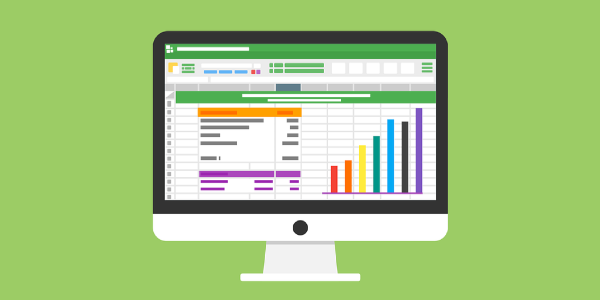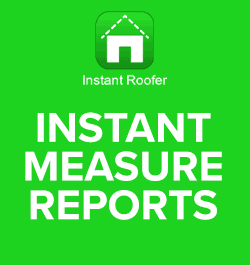UP TO THE MINUTE
Using Analytics to Drive Profits in Your Roofing Contracting Business – Part One

By John Kenney, Cotney Consulting Group.
One of the most powerful ways to gain a competitive edge over your competitors is by understanding your analytics.
In today's highly competitive business environment, roofing contracting contractors must constantly seek out new ways to increase profits and gain a competitive edge. One powerful tool for achieving these goals is analytics. By collecting and analyzing data about key performance indicators (KPIs), contractors can gain valuable insights into their operations, identify areas for improvement and make data-driven decisions that can drive profitability and growth.
This article will explore how a roofing contracting business can use analytics to drive profits. We'll begin by defining business goals and identifying KPIs that are most relevant to achieving those goals. From there, we'll explore how to collect and analyze data and use that data to optimize operations, improve customer satisfaction and plan for future growth. By following this plan, roofing contracting contractors can harness the power of analytics to achieve greater success and profitability.
Define your business goals
Defining business goals is essential in any analytics strategy, as it provides direction and focus to the analysis process. When it comes to a roofing contracting business, there are several key goals that analytics can help achieve.
One of the most common goals is to increase revenue. Roofing contracting contractors can use analytics to track metrics such as revenue per job, number of jobs completed, and average contract value to identify areas where they can improve revenue. For example, an analysis may reveal that the business could increase its pricing, expand its services or target specific types of clients to achieve this goal.
Another goal is to reduce costs. By analyzing data on expenses such as labor costs, equipment costs and materials costs, contractors can identify inefficiencies, wasteful practices or areas where costs could be reduced without compromising the quality of the work. For example, data analysis may reveal that the business can reduce fuel costs by optimizing job site routes or that certain roofing materials are more cost-effective than others.
Improving customer satisfaction is also a crucial goal that can be achieved through analytics. Contractors can collect customer satisfaction ratings, complaints and feedback data to identify areas where they can improve their services or address customer concerns. Companies can increase customer loyalty, generate positive reviews and referrals and drive revenue growth.
Other potential goals for a roofing contracting business might include improving employee productivity, streamlining operations or expanding into new markets. Whatever the goals may be, defining them at the outset of the analytics strategy is critical to ensuring that the business focuses on the metrics that matter most and achieves the desired outcomes.
Identify key performance indicators (KPIs)
After defining the business goals for using analytics, the next step is identifying the key performance indicators (KPIs) that will help measure progress toward those goals. For a roofing contracting business, several KPIs are particularly relevant.
Revenue per job is an important KPI measuring the revenue generated per roofing project. This metric can help contractors identify areas where they can increase revenue, such as adjusting pricing, expanding their services or targeting high-value clients.
Profit margins are another important KPI for roofing contracting contractors which measures the difference between revenue and cost of goods sold, labor and overhead. By tracking profit margins, companies can identify areas where they can reduce costs or improve efficiency to increase profitability.
Customer satisfaction ratings are a crucial KPI for any roofing contracting business. This metric can be measured through customer feedback surveys, reviews or other feedback mechanisms. By tracking customer satisfaction, companies can identify areas where they can improve their services and generate positive reviews and referrals.
Employee productivity is another important KPI for roofing contracting contractors. This metric measures the efficiency and output of employees. It can be tracked through metrics such as hours used to complete projects, the number of jobs completed per employee, or other relevant measures. Roofing contractors can identify areas to improve efficiency and reduce labor costs by monitoring employee productivity.
Other potential KPIs for roofing contracting contractors might include on-time completion rates, safety records, or materials waste rates. The key is identifying the most relevant KPIs to the business goals and tracking them consistently over time to measure progress and make data-driven decisions.
Collect and analyze data
Once the business goals and key performance indicators (KPIs) have been identified, the next step is to collect and analyze data to track performance. Here are some steps that roofing contractors can take to collect and analyze data effectively:
- Identify data sources: You must identify the relevant sources of data. This could include invoices, receipts, customer feedback forms, time-tracking software or other relevant sources.
- Determine data collection methods: Once the data sources have been identified, contractors must determine how they will collect the data. This could involve manually entering data into spreadsheets, using software to automate data collection or other methods.
- Identify relevant metrics: To measure progress toward business goals effectively, contractors must identify the relevant KPIs and metrics to track. This could include revenue per job, profit margins, customer satisfaction ratings, employee productivity and any other relevant metrics.
- Set up dashboards and reports: To monitor performance over time — contractors can set up dashboards and reports to track key metrics. This could involve using software tools such as Microsoft Excel, Google Sheets or specialized business analytics software.
- Analyze the data: Once the data has been collected and organized, contractors can begin analyzing it to identify trends, patterns and areas for improvement. This could involve using statistical analysis tools, creating charts and graphs or other data visualization methods.
- Make data-driven decisions: Finally, contractors can use the insights gained from data analysis to make data-driven decisions about optimizing operations, improving customer satisfaction and driving profitability.
In Part Two of this series, we will examine how to collect and analyze data and use that data to optimize operations, improve customer satisfaction and plan for future growth.
Learn more about Cotney Consulting Group in their Coffee Shop Directory or visit www.cotneyconsulting.com.
About Cotney Consulting Group
Unlike other “business” consultants, Cotney has 65+ years’ experience solving the problems of roofing companies. With real experience running 8-figure, multi-million dollar companies, our consultants did not learn about business consulting from a book — we have experienced the same problems that you have, solved them and moved on to create a storied history of success. We can share our experiences with you and help you achieve success. Learn more at www.cotneyconsulting.com.





















Comments
Leave a Reply
Have an account? Login to leave a comment!
Sign In